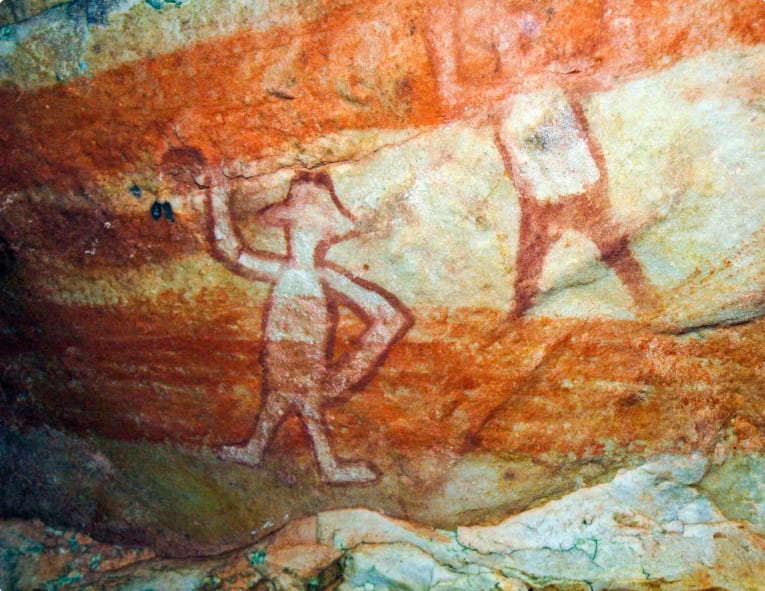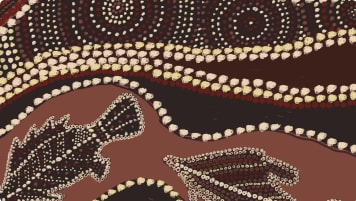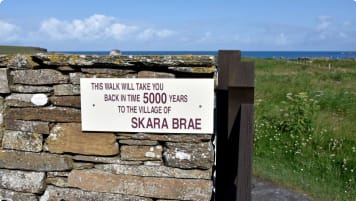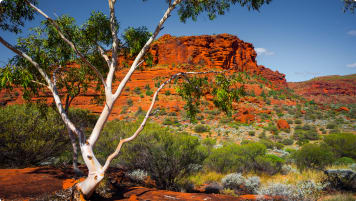Madjedbebe Archaeological Site, Northern Territory
Madjedbebe Archaeological Site, Northern Territory Near the border of western Arnhem Land and Kakadu National Park in Australia’s ‘top end’, Madjedbebe rock shelter (formerly known as Malakunanja II) is the oldest archaeological site in Australia,…
4 Mar 21 · 6 mins read

Madjedbebe Archaeological Site, Northern Territory
Near the border of western Arnhem Land and Kakadu National Park in Australia’s ‘top end’, Madjedbebe rock shelter (formerly known as Malakunanja II) is the oldest archaeological site in Australia, and one of the most important in Australian archaeology. The Madjedbebe site is famous for the startling insights it has provided to the story of modern humans, with powerful evidence pointing to of the vast antiquity of Aboriginal settlement in Australia.
Following the discovery of 40,000 year old remains at Lake Mungo, New South Wales, the general archaeological consensus was Australia‘s first aboriginal people reached the continent around 40,000 years ago. This idea was given support by the fact that a number of further sites of early occupation have been found around Australia – including Devil’s Lair, south of Perth, and hearths found within clay terraces on the Upper Swan River – dated at around 37,000 – 40,000 years ago.

However, the estimated date of aboriginal occupation at around 40,000 years also coincided with what was then regarded as the ‘radiocarbon barrier’, as the point at which carbon decay and contamination meant that archaeological sites could no longer be dated accurately. Even today, it is rare to get dates older than 40, 000 years. Because of this, many archaeologists suggested that what was known as the ‘plateau’ was an illusion due to the limitations of radiocarbon methods. In 1979, the archaeologist Rhys Jones – who was also involved in the excavation of Ice Age sites in Tasmania – suggested that first settlement might go back 50,000 years or more.
In search of evidence, Jones conducted a large-scale survey of deep rock shelters in Arnhem Land, exploring ‘very remote country’ with the Aboriginal custodians of the land, who guided him to sites and helped him to sieve and dig. Initial digs – such as one at Nauwalabila I in 1981 – turned up a range of old dates, but none could convincingly overcome the limits of radiocarbon dating.
In 1987, the geochronologist Bert Roberts asked Jones whether he would be interested in revisiting Nauwalabila I, using the more recent technique of thermoluminescence, which dates the moment that an individual grain of sand last saw sunlight. While the margins of error are still high, thermoluminescence is capable of dating up to several hundred thousands of years ago.
While due to Aboriginal funeral rites, Jones and Roberts could not return to Nauwalabila I, they visited two sites to the north – Madjedbebe and Malangangerr. The initial dates for the lowest stone tools and artefacts at Madjedbebe came back between 50,000 and 60,000 years. Later investigations at Nauwalabila also came in at around 50,000 years.
The initial findings were published in Nature in 1990, suggesting human occupation in Australia dating back approximately 55,000 years. However, many were sceptical of the dates, challenging the new method of thermoluminescence dating, or questioning whether human or termite activity might have led to the artefacts being present at the lower levels. In the following years, a number of even more ancient claims – such as Jinmium, a site in the Kimberley dated at between 116,000 and 176,000 years old – were found to be inaccurate, casting more doubt on Madjedbebe.
In 2012, a team of researchers from the University of Queensland returned to the site, hoping that recent advances in dating techniques could resolve the debate over the antiquity of the site. Working closely with the Mirrar custodians of the site, their dig uncovered stone tools used for seed grinding and ochre ‘crayons’ used to make pigments – the earliest indication of artistic expression in the world. Using both radiocarbon dating and optically stimulated luminescence (OSL) to date objects, the oldest objects in this ancient site were dated back to 65,000 years ago.

The ancient site indicates that the first Australian aboriginal people arrived more than 20,000 years before the first humans arrived in Europe, at 40,000 years ago, with aboriginal habitation for more than 20,000 years alongside megafauna, challenging ideas that the arrival of people led to the extinction of these vast native animals. The sheer scale and enormity of this period in human history challenges many western conceptions of ‘ancient times‘, generally associated with ancient egypt, pompeii or ancient greece, with the story of human habitation evolving to one far more complex, widespread and venerable.
As historian Billy Griffiths points out in Deep Time Dreaming: Uncovering Ancient Australia, the arrival of humans to Australia is of international importance for understanding human prehistory. Since the 1980s, archaeologists have believed that our ancestors, modern humans, migrated by foot out of Africa in a single exodus around 70-80,000 years ago, passing through the Middle East and Asia to contemporary Indonesia. But unlike earlier humanoids, which had made the same journey, homo sapiens was able to go further, making the 100 kilometre boat journey to Sahul (the ancient continent linking Australia, Tasmania and Papua New Guinea, before the rising of sea levels to their current point).
For psychologist and archaeologist William Noble and Iain Davidson, the move to Australia is the ‘earliest evidence of modern human behaviour’. The construction of boats and navigation of the seas is the earliest moment in prehistory involving a level of language ability, navigational skill, and technological capacity that we can regard as distinctively human.
It is hard to imagine the vast length of human use at the Madjedbebe site, perhaps even being the answer to the question ‘what is the oldest archaeological site in the world‘. When humans first arrived, the climate was warm, a period of glacial retreat in the Last Glacial Period (commonly known as the Ice Age). 35,000 years ago, the glaciers came back, drying out the Australian continent. Then, from 17,000 to 7,000 years ago, the glaciers melted and the seas rose, destroying swathes of the Australian landmass, and likely causing significant social turmoil. Mangroves and tidal conditions reached the edge of the shelter in the Estuarine Period. Around 1400-1000 years ago, the seas retreated yet again, creating the freshwater wetlands and lagoons we see today, bringing people to Madjedbebe in the dry season to harvest seafood.
Odyssey Traveller explores the ancient Aboriginal history of Northern Australia on our new tour of Kakadu, Arnhem Land, and Darwin. Designed to go beyond the tourist sites of your typical Kakadu day tour, our tour spends six nights in lodge accommodation in Jabiru, to give you the opportunity to explore the park in depth. On our Kakadu tour, we explore the vast natural diversity of Australia‘s largest national park, from sandstone escarpments to monsoon forest, from freshwater wetland to tidal flats and the cascades of ‘Waterfall Creek’. Kakadu is also home to an incredible range of wildlife, including 1/3 of Australia‘s bird species and a number of threatened species. We will have the opportunity to see some of Kakadu‘s incredible wildlife on a Yellow Water Cruise of the Yellow Water Billabong – just watch out for the saltwater crocodile!
Our Kakadu tour also takes the time to learn about the indigenous culture of the park, visiting the ancient Aboriginal rock art of Nourlangie Rock and Ubirr Rock.
Beyond Kakadu, our tour crosses over the East Alligator River and visits the Aboriginal land of Arnhem Land, a place of rich Aboriginal culture and vast natural beauty; where we visit ancient rock art, contemporary Aboriginal art centres and learn from the traditional owners of the land. We also visit the Mary River Wetlands, and stop in at Litchfield National Park, to see the stunning waterfalls, striking termite mounds and pretty Buley Rockhole, one of the Northern Territory‘s most popular swimming holes. Our tour also spends time in Darwin, the laid-back capital at the ‘Top End’ of Northern Australia.
Odyssey Traveller has been serving curious mature and senior travellers since 1983. We pride ourselves on getting off the beaten path, offering an in-depth and authentic experience of every travel destination. In addition to our Kakadu tours, we are now offering a number of outback and Australia small group tours.

Articles about Australia published by Odyssey Traveller:
- The Kimberley: A Definitive Guide
- Uncovering the Ancient History of Aboriginal Australia
- Aboriginal Land Use in the Mallee
- Understanding Aboriginal Aquaculture
- Mallee and Mulga: Two Iconic and Typically Inland Australian Plant Communities (By Dr. Sandy Scott).
- The Australian Outback: A Definitive Guide
- The Eyre Peninsula: Australia’s Ocean Frontier
- Archaeological mysteries of Australia: How did a 12th century African coin reach Arnhem Land?
- Ancient Aboriginal trade routes of Australia
- South and East Alligator Rivers, Northern Territory
For all the articles Odyssey Traveller has published for mature aged and senior travellers, click through on this link.
External articles to assist you on your visit to Australia:
- Indigenous rock shelter in Top End pushes Australia’s human history back to 65,000 years
- 65,000-year-old plant remains show the earliest Australians spent plenty of time cooking
- Australia’s First Peoples
- The Met: X-ray Style in Arnhem Land Rock Art
- ‘A big jump’: People might have lived in Australia twice as long as we thought
Related Tours

days
Jun, Jul, Sep, Feb, Mar +1Darwin and Kakadu small group tour
Visiting Northern Territory
Explore and learn as part of a small group tour for seniors on this package tour to Darwin and Kakadu National park, a UNESCO world heritage site. This program also visits Arnhem land. Our focus is on ecology, landscapes and history on this 14 day program in the far north of the Northern Territory.

13 days
May, Jun, Jul, Aug, SepSmall group tour of Australia's Kimberley
Visiting Western Australia
Escorted small group tour of the Kimberley. We explore and visit The Bungles, Bell Gorge, Mitchell plateau & Halls Creek in the dry season. Amazing landscapes intertwined with Aboriginal communities resident more than 45,000 years.
From A$15,390 AUD
View Tour
days
Mar, May, Aug, Sep, Oct +2Small group tour of World Heritage sites and more in the Southern States of Australia
Visiting New South Wales, South Australia
Discover the World Heritage Sites of the southern states of Australia travelling in a small group tour. A journey of learning around the southern edges of the Murray Darling basin and up to the upper southern part of this complex river basin north of Mildura. We start and end in Adelaide, stopping in Broken Hill, Mungo National Park and other significant locations.




